ANDERSTORPSFESTIVALEN 2019






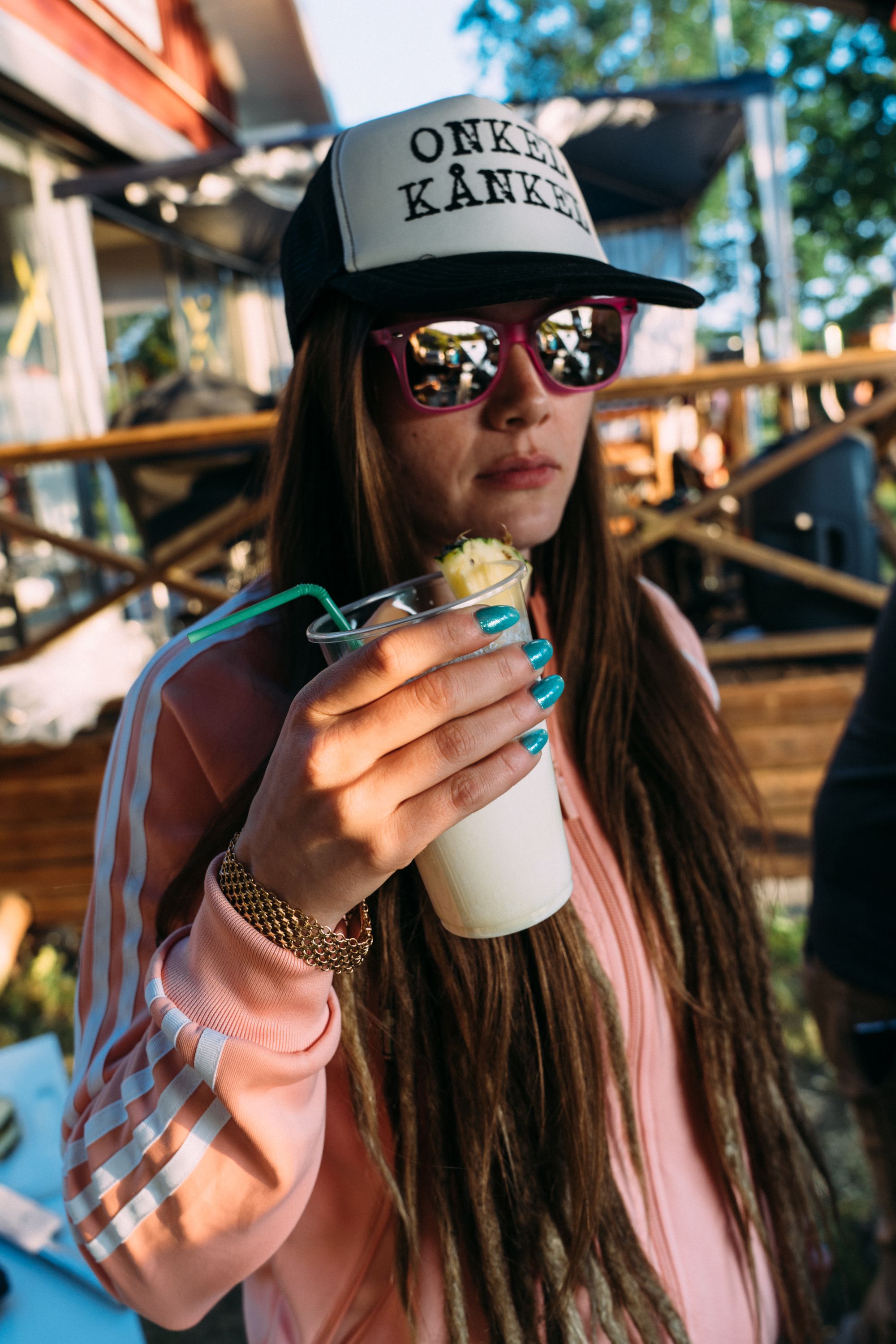

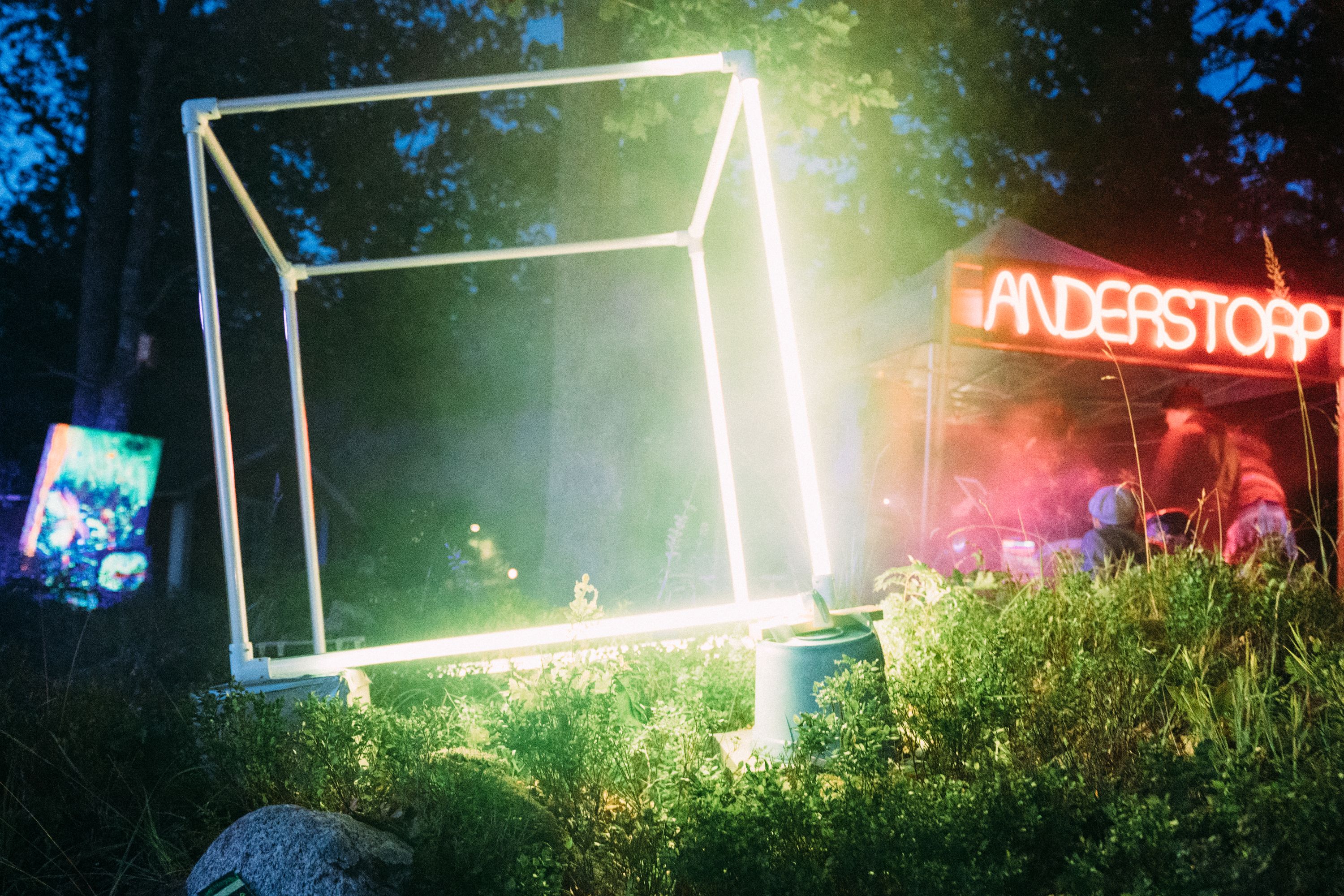



For you that aren’t aware, the GORUCK Star Course is an event where you have to walk 50 miles in less than 20 hours with a 20 pound weight plate in your backpack. The event starts at 21:00, meaning a long night of walking and you get the “hit list” of coordinates once the event starts, meaning you have to balance plotting your route against time lost to walking.
A normal after work beer with a colleague did lead us into the subject of the Goruck Star Course 50 miler. My colleague really wanted to do this event and talked about what he had heard and read about it. While this didn’t seem to tempting due to the distance, I wanted to be encouraging and told my colleague that I’d promise I would walk with him if he did it. Anyone who knows me knows that I do not break a promise/bet that i make. My colleague took me up on the offer and we started doing early walks in February to feel this event out, which in turn had my colleague ordering the weight plates.
During this same time period I ran a half marathon with Conrad who has made a very inspiring turn in his life by shedding tons of weight and really gone to a new fitness level in a short amount of time. I’ve done tons of half marathons before but it was really fun to actually run with someone that had never done it before and I asked Conrad shortly afterwards if he wanted to join our team for the Star Course. He said “he would think about it” and I do not blame him because the offer itself is insane. Pay money to basically walk for longer than you’ve ever done and on top of it carry a weight on your back? Why?
He eventually decided he would join me on this trip and we started talking about how we would train for this event. Around this time my other colleague dropped out for a variety of reasons and I honestly do not blame him for it. Realizing early that this is a too big of a cake to eat is sane and is something I think most people should feel better about doing. If you don’t feel up to the task it’s better to wait another year and train more for it than diving into the insanity. The problem with this is that me and Conrad had sort of decided mentally that we would do it and our main motivation was suddenly gone. At this point we could have given up on this idea altogether, however, we’ve grown attached to the idea of doing this that we decided that we would try our hand at this regardless.
The cutoff time for this event is 20 hours, our goal was to finish at 19:59:59. As in, our goal was to get through the finish line, not aiming for a specific time. We tried training as much as time allowed with our schedules which ended up being approx 6 longer “rucks” (carrying the weight in a backpack) prior the event. Both me and Conrad does strength training and running outside of this which helps a lot also. The training events served two purposes that are important, the first being to build the mental & physical strength to carry the backpack for longer distances. The second and most important being to verify that the gear selection actually worked. There were a bunch of parts of our loadout that we ended up changing during training because they caused chafing or did not contribute enough function for the weight. All these spent hours ended up being crucial to the success of this event.
Two of these training walks were particularly memorable, the first one being half of the SF Crosstown Trail. San Francisco has created a “crosstown trail” which spans from the east part of SF all the way over the city to the west. On paper this sounds quite boring, walking through generic San Francisco neighbourhoods but in reality this is a really well planned walk with a lot of interesting parts. I was surprised to find so find so many hidden gems of the city and we only did 2/3rds of the walk.

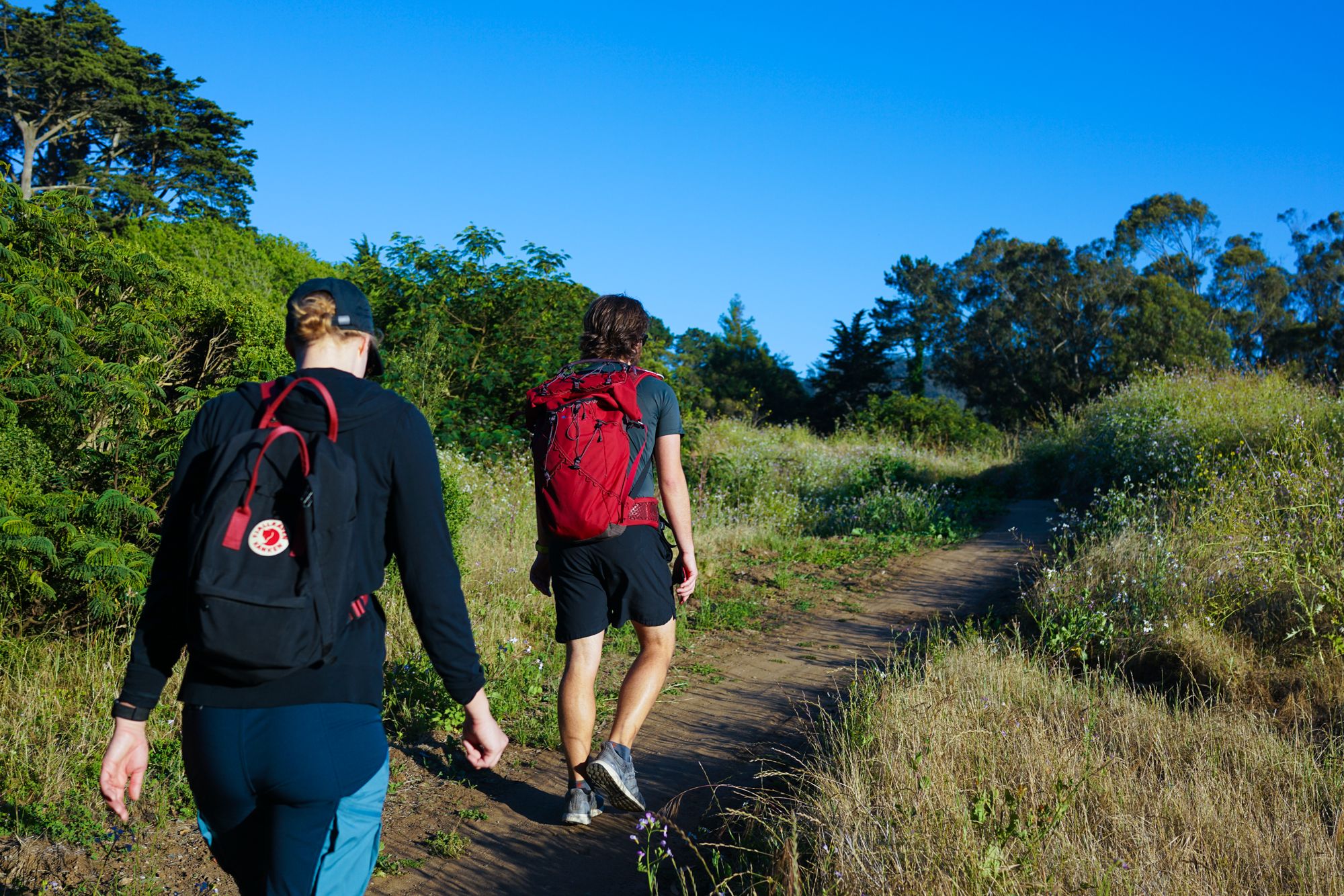
Sara joined us for this walk, she couldn’t participate in the Star Course due to a wedding in Sweden but she enjoyed walking with us and seeing these beautiful spots of San Francisco.

The walk goes through unknown parts of San Francisco that feels remote, although in the middle of the city like the image above.

The second “memorable” walk was San Francisco -> Mount Tamalpais. The cool part about this walk is the change in scenery along the route. It starts out with San Francisco urban, crosses the Golden Gate bridge, goes into Sausalito, through Mill Valley and up to Mount Tamalpais which is a visible change in both scenery and nature.
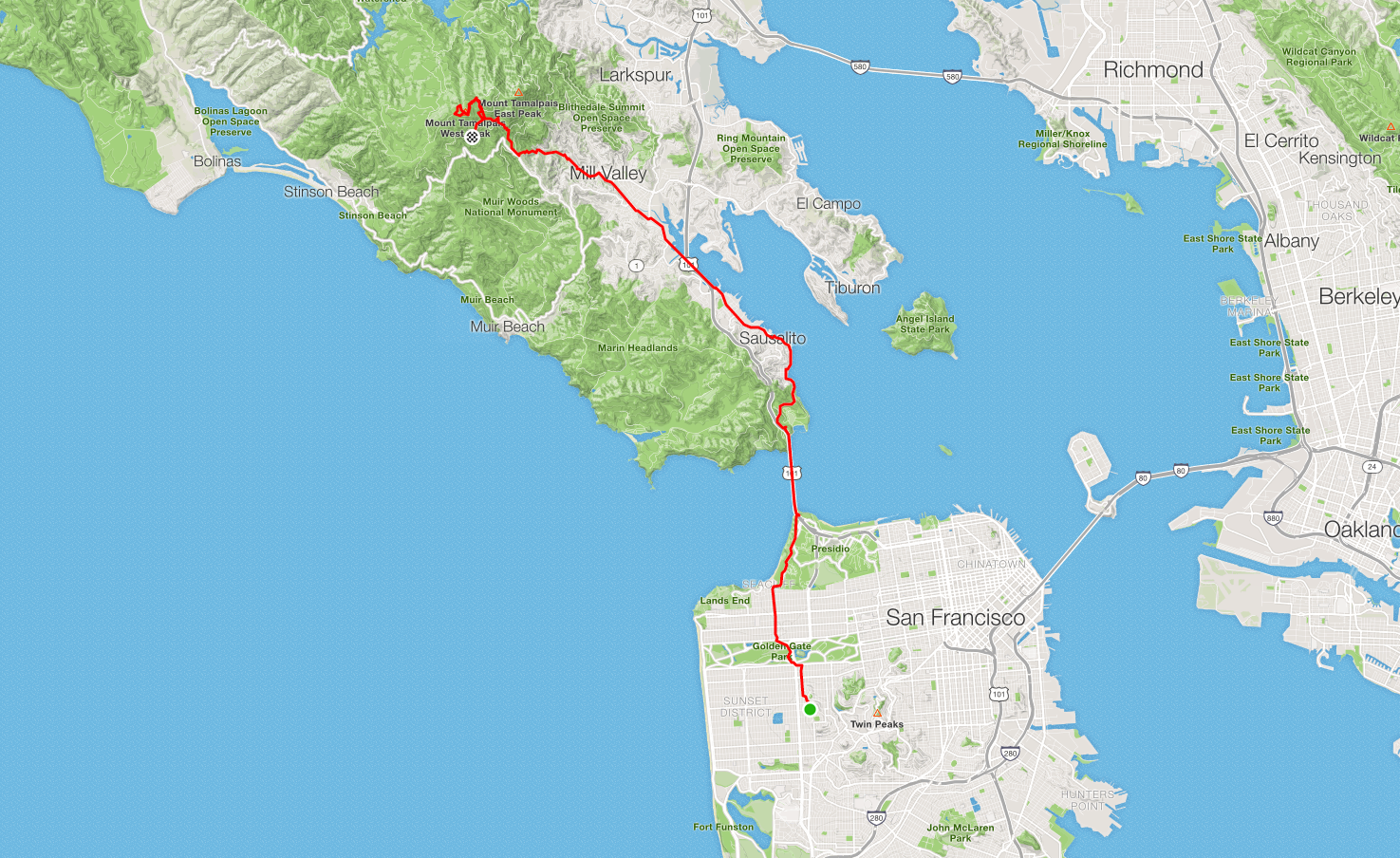
For this one both me and Conrad had focused on figuring out packing and setting a good hydration & nutrition schedule for walking. We’ve both switched to the Hyperlite packs and went for a hike with a lot of elevation.

Mount Tamalpais offers some less than optimal trails which was perfect in order to train terrain with a heavier backpack after having walked 25 kilometers. Apparently the rain period that hit the area earlier in 2019 had eroded a lot of the previously better paths.


After visting the peak, we made our way down to West Point Inn which is an inn with a beautiful location, overlooking the entire Bay Area. You can also see Karl The Fog engulfing San Francisco.

It’s important to talk about one of our main strategies that attributed to us finishing this event, namely our approach to weight. We knew that we had to carry a 20 pound weight in our backpack, so why make it harder by adding auxiliary weight? While the event is centered around the Goruck brand, it’s not a requirement to use their gear for completion of the event as long as the gear you’re using meets a certain criteria. Every pound we shaved off on gear surrounding the weight plate meant less weight that would be carried around the course. For us this meant going with Hyperlite Mountaingear’s Windrider 2400. As interesting the Goruck Rucker 25L looks, the Hyperlite weighs 580 grams less and features a hip belt. Now, for all the other Goruck events that means carrying a backpack while crouching through mud I would recommend against using an ultralight bag for durability. For this specific event however that focused solely on walking, ergonomics and weight trumps durability.
In the spirit of the bag, all the gear I carried was optimized for weight. If we thought we wouldn’t need it, it didn’t go into the bag. Since the climate in the Bay Area is relatively stable, especially in August (FOG FOG FOG), carrying a fleece, rain jacket or extra shirt was out of the question. All the supplies like caffeine pills, ibuprofen and batteries was repacked into lighter containers in order to shed weight from our backs. Since this is an event based mostly in the city, we assumed that most would be walked on concrete. Hence instead of going with heavy hiking boots, I went with Adidas UltraBoost shoes and Conrad used Adidas Terrex hiking shoes, which weighs a lot less than hiking boots and provides better cushion.
Most other participants publish one of these lists and it helped us immensely in preparing for the event. Being able to see other participants strategies from previous years in what to bring influenced our thinking although we for sure had our own twist on the list.
Me and Conrad arrived at the race location at 19:30 as specified. We realized that this was a Jebait to get people to be in time for the 20:00 actual call time as the organizers started polling for teams at 20:00. After feeling a bit Jebaited we got checked in and had our bags checked out by the organizers. One of the organizers made a small remark on our UL backpacks which I had almost expected but it was fine all in all. I was starting to get really excited, mostly because this event was beyond anything that I had done prior. I have participated in running events of many sorts, geocaching events, cycling events, skiing etc but this is a unique event in so many ways that I did not know what to expect. In order to keep track of the participants, the participant is responsible for posting a picture of the team in front of the waypoint at every stop to Instagram.
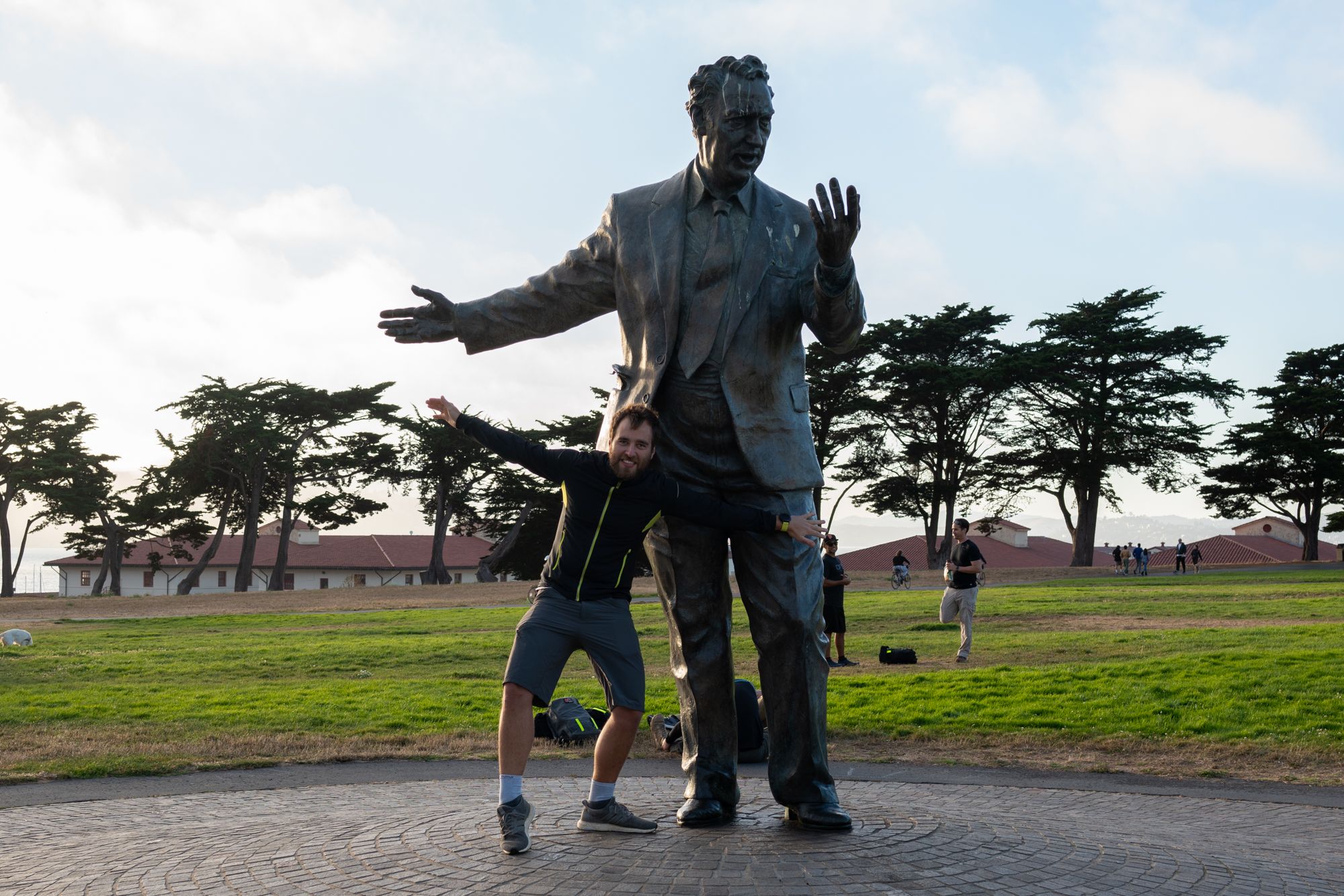
The event starts with the main organizer holding a small speech with a large American flag. I was a bit wary of this at first but the organizer had really had a good speech with this. I’m always afraid that people use these moments to steer towards racism but the organizer made strong points about encouraging diversity and equal value which I felt was really powerful to hear. I’m not American by any stretch but I could still stand behind the values the organizer expressed.

Once the clock hit 21:00 we were handed our “hit list” of waypoints to walk to and take a photograph of. One thing that really struck me here is that you didn’t get any time prior to the event to make a route, rather the routing started as the event timer started meaning that you had to balance creating a route against your eagerness to walk. Me and Conrad shred through the list and added all the waypoints into RoadWarrior (an app dedicated to routing for waypoints). Since I’ve stayed in the city for a good time now I have a good local knowledge about the hills and the routes which helped us further optimize the route that RoadWarrior suggested. Once we had gone through the waypoints twice and talked through our approach we decided to hit the road and walk the path clockwise. This took us about 15 minutes, other teams spent longer and some just walked off and started routing while walking. I think we found a good balance, but it helps being a really fast typer on a smartphone. All my work emails on my smartphone paid off as I entered these coordinates at a very fast speed into the routing app.

Unlike some other event reports I’m not going to annotate every stop, rather give an overall description about the experience throughout and pick out some stops. If you want to see all the “waypoints” we hit, check out the event Instagram at /teamperryman.
Our event started out rough with us not being able to get a picture of SS Jeremiah, which was cleared up by communicating with the event support team through Instagram DM’s (I will say, it’s such a weird way of running an event but it seems to work for them). After the initial hurdle our walk gets a good pace and we start talking to a team that we catch up with. We head over to Dragon Gate that’s 150 meters from our office, so no trouble finding this one for sure.

After Dragon Gate, our next stop is the ballpark down in Mission Bay. It’s not too bad of a walk but it includes backtracking the full route in order to hit the SF mint. In hindsight, hitting the mint first and then walking towards Dolores Park would probably have been a better idea but that would only have saved us a minimal amount of time. The good part about the route we took was that it kept elevation in the city to an almost zero compared to what SF have to offer, sparing our muscles for the hills yet to come.
Once we hit Dolores, my feet started to hurt a fair bit due to my shoes being tightened way too hard early on. I had my laces adjusted for running and walking for 3 hours really made my feet expand, something to consider for other times. After Dolores we found a place that sold pizza by the slice, which we took opportunity of.
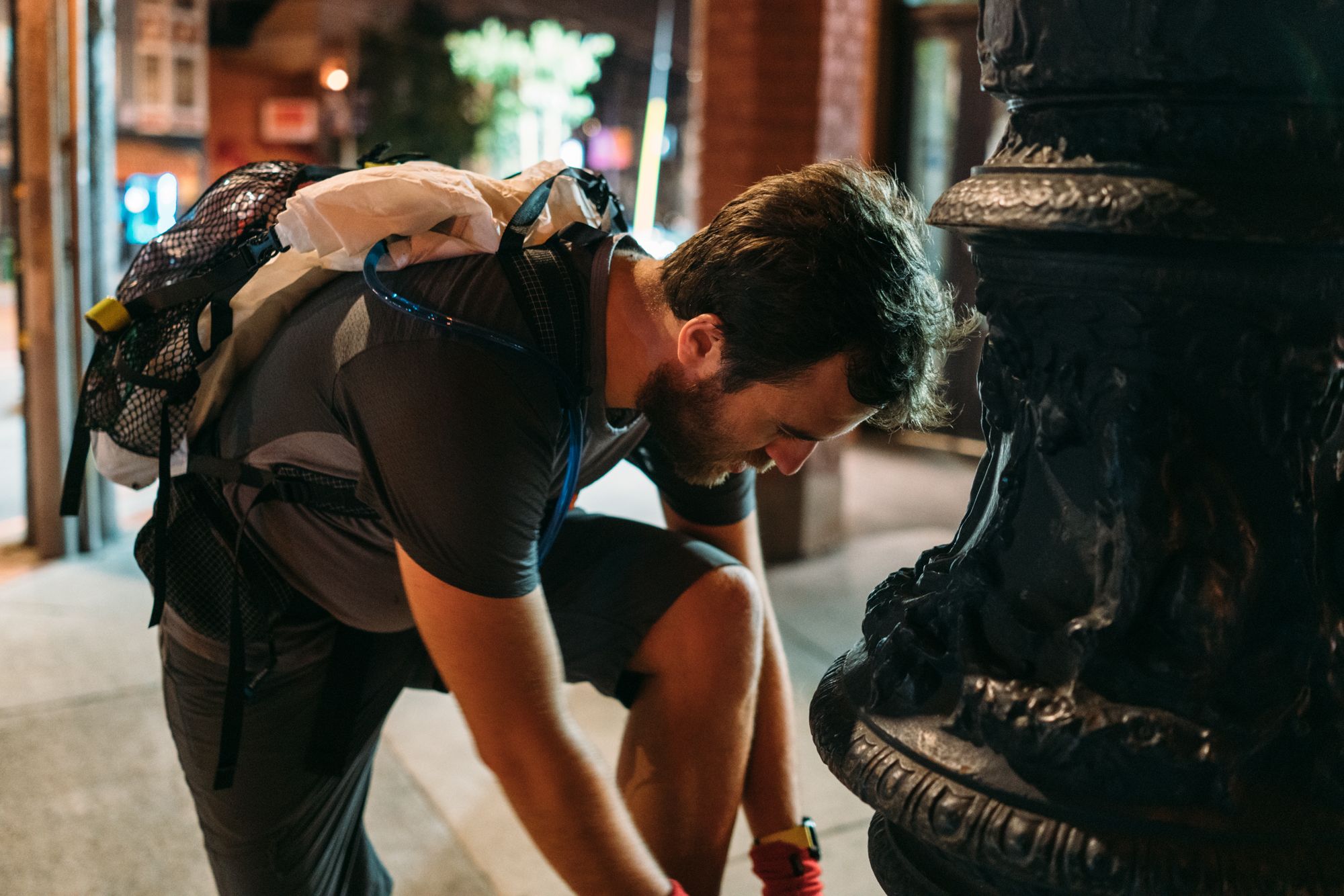
We hit the famous Painted Ladies, met up with a 15 people participating from SFPD. They all seemed to be in a much rougher condition than us which I attribute to them having walked much faster to get there. I do think setting a solid pace that you know that you can keep for the entire event is more important than rushing out of the door and jogging early, only to drain everything you have.

We end up trailing these guys for a while, just because they happened to walk in front of us and that we needed to walk a bit slower due to my foot recovering from being laced too tight. This group ended up walking too slow for our taste and we decided to pass them at the next stop, which was the San Francisco Columbarium.
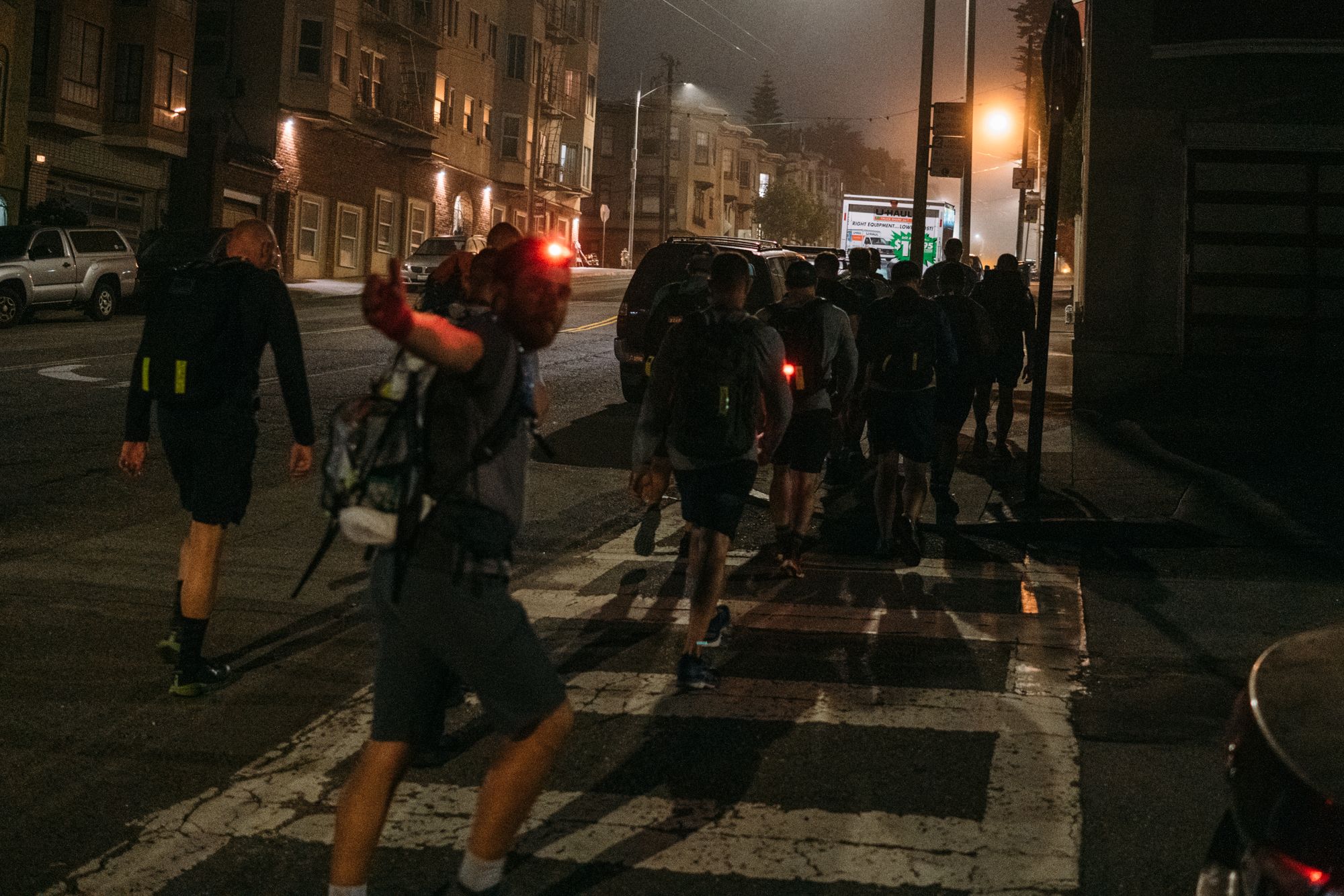
From here on it started to get a lot tougher. We are about 5 hours into the event and the fog is really coming into San Francisco together with a light fog drizzle that makes everything wet, regardless of what direction or path you take. Heading up to the Mt. Davidson Cross was the first real “brutal” part of the event, as the climb up there really got our pulse up.

I thought that my shoes were RIP from all this mud and water but they actually sustained all of this pretty well until later stages of this.

From here on there was one more waypoint at a school staircase which was pretty easy as it was mostly downhill from the cross, after this waypoint we headed for our 3,5 hour long walk down to Pacifica where the Battery #244 waypoint awaited us. We figured that this would be a waypoint prior to the event due to the events always including “one long stretch”. There really aren’t any interesting stretches if you aren’t passing the Golden Gate Bridge and I had a feeling that we wouldn’t do it. It was just too obvious to add a stretch over the bridge so my bet was that we were walking to Pacifica. This walk was sort of the make or break for this event. The battery would be our halfway point of the event, if we could hit this point then finishing would be a breeze as it would just be repeating the same distance again.
This walk was a long and really tested our pace, sustaining the pace for 3 hours without virtually any breaks at 3AM was though on us, especially when we hit Colma as it was just closed down industrial areas and shopping malls along the Interstate 280. Our goal was to hit Battery at around 0630 as Conrad’s SO would meet us sometime after 0700 with a resupply. Even if we didn’t end up taking much from the resupply, the fact that someone came to meet us helped a great deal with morale. If you are doing this event and have an opportunity to schedule a resupply from a friend, do it.
Once we hit Westborough in South San Francisco we see reflective bands bouncing in the distance. Seeing since it was 03:59 our bet was that this was other participants that we had caught up with and these guys were heading into a McDonalds. My feet started to hurt really bad at this point so we considered this also being a fantastic idea as the place had just opened and a warm coffee nice. The team we’d met up with was /dadbodssf, a team that we would up meeting on and off for the next 4 hours. Really nice group of people. They had an insane pace down to Pacifica but ended up slowing down after hitting the battery.

After leaving the McDonalds I proceed to switch socks and remove the sock liners. The weird part is that my right foot was completely fine but my left foot had multiple blisters that hurt beyond what I at that point thought was acceptable (little did I know…). I also applied some trail toes which helped alleviate the friction between the toes. Once this was done we proceeded to walk up the hill that leads into Pacifica. This is a long hill that leads on forever, passing over the mountains that separate Pacifica from the other part of the bay.
This point marks a significant change in the event, the sun was going up! Our headlamps started being less and less visible and the world around us became more clear as we headed down Westborough Boulevard into Pacifica and we met multiple teams that were heading up the hill as they were doing the path counter clockwise. This sort of felt like the “half-way point” of the event and it was a blast to see other teams that also had made the long stretch.
Heading up the hill up onto Battery #244 we were greeted by Team Dadbodssf once again, they seemed less enthusiastic about the event at this point but morale was still high.

As I mentioned earlier, we had a supply car meeting us in Pacifica which was highly appreciated. Coffee was good and just being able to switch out a few things was a godsend. While supplying, team Dadbodssf passed us on the street behind and I waved hello to them. Marisa took this fantastic picture that symbolises the pain.

People say that the event really starts at 30 miles (48 kilometers). We joked about it frequently during the early stages of the route, thinking that the event was easier than advertised and yeah I’ll admit that we were wrong about that. Around 30 miles for us meant hitting Skyline Drive which would take us out of Pacifica and this was really when the morale started going downhill. The elevation was brutal and the hill felt endless as the fog was so dense that you couldn’t see the end. With no end in sight we trudged Skyline Drive, meeting up with Dadbodssf once again. This time they looked truly broken and their pace was significantly slower than ours, which is how we caught up with them.
This was the hill that symbolised the make or break for me and Conrad. The last “major” hill for the whole stretch, the following ones neither had the elevation nor the distance so this was it. The mental game really started happening at this point, our previously very talkative walk had turned into silence and no pictures were taken during this walk. It was truly an awful part of the walk where you had to be extremely stubborn in order to tell your body to keep walking. Sleep deprivation started to get real, as did the pain in my feet.
The event organizers had explicitly asked people to not walk along Skyline Boulevard so once we cleared up Skyline Drive we had to make a decision on how to clear this hurdle. There really isn’t a good way of walking once Northgate Avenue ends. Other teams told us that they had just walked Skyline Boulevard regardless but we didn’t feel for it. It just isn’t safe to walk there and being awake for that long makes your reaction speed go down a lot. We ended up crossing Skyline Boulevard onto the beach, walking along sand trails on the beach which hit our pace a lot but was the safe choice. At the end of this beach walk we had to regain a lot of altitude in order to get back up to the Nike Missile site. This part was the worst part of this entire walk, trudging up for these sand steps that had been destroyed by the rain, amassing a full beach inside your shoes while sweating insanity.
I only have a picture after we cleared the steps but my face says enough.
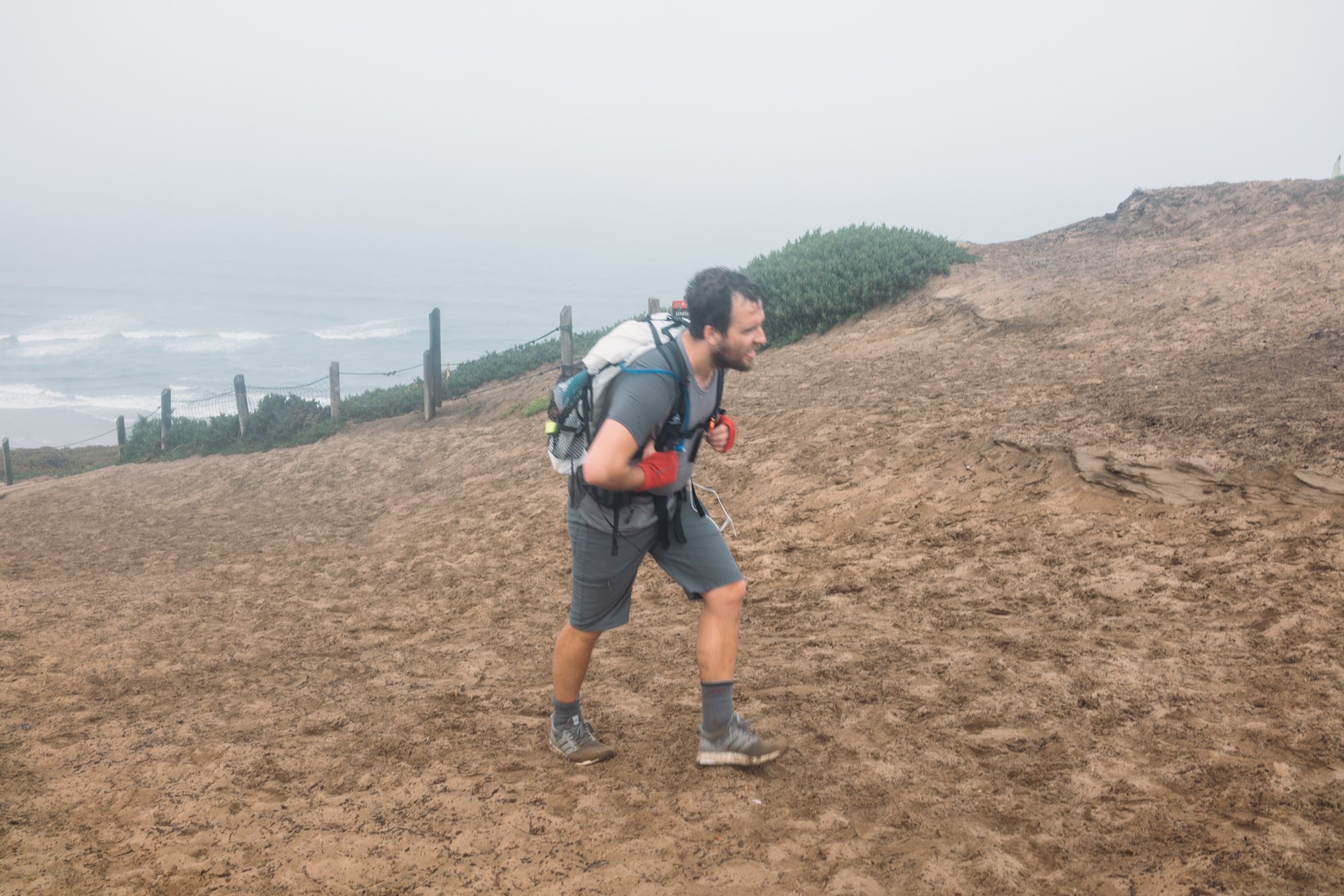
Once up by the waypoint, I had to sit down to empty my shoes of the 1 ton of sand and regain some energy from the steps. We take a longer break here to reload, as this is the last part of the less urban section of the event. After this part we head back into the city to pick off the last 4 waypoints.
Guess which team that shows up? Dadbodssf once again, looking even more broken than before. You can tell that the Pacifica hill broke them as hard it did break us. Mile 30 had passed, the event had begun.

We’re walking into the Sunset district, discussing how scuffed we are. Conrad rates himself a 10 out of 10 on the scuffness scale and so do I. I am truly scuffed at this point, or so I believe. Remember earlier when I mentioned that I thought that the pain 3 hours was unbearable? This was a new record in any shape or form and I wished to have the pain I felt 3 hours back. This was no longer just uncomfortable but exhausting and draining. Every step felt like slamming a concrete brick on my foot. Luckily we had predicted this and increased the dose of Ibuprofen which took us to the fire station in the Sunset.
Since I live in Sunset I had an idea that it would be easier since the areas would be known. It ended up being the opposite, as I knew by heart exactly how long it was to where we had to walk next. It was starting to get really though at this point, as exhaustion started to set in and the day started to heat up. Walking during the night was easy as your excessive heat was fine in a colder climate. With temperatures starting to creep up to 25C during the day, the heat suddenly became harder to deal with. The Dutch Windmill was built in 1902 in order to irrigate the surrounding land using groundwater and served as a good waypoint for the bottom half of Golden Gate park.
Once there we met a team that just had dropped out. They had walked around 32 miles and had decided to not continue, as they had missed a lot of waypoints and just wouldn’t be able to finish in time. They told us that they had set out directly without mapping it out properly and as a result of that missed a lot of the vital routing that went into this event. It was a bit disheartening to see 3 guys that had walked for this long and realizing that they wouldn’t be able to finish it, but it also served as a motivation for us. We now knew that our route had been solid and that we had a good chance of finishing. They gave us encouraging words and offered up food, we took the words but left them with the food onto our 2 last waypoints of this escapade.

From here on we climb up to the Legion of Honor building in order to take a picture in front of a statue. This walk was actually fine, as walking uphill turned out to be much easier on the legs at this point than walking downhill. That together with knowing that this was one of the two remaining waypoints that we had for hit for this to be over. Easily done, we took a picture of the statue, sat down for a few minutes and headed out to the last waypoint.
At this point in time we stopped thinking about the event as distance walked or time passed and instead of “how long do we have to go for this pain to be over”. This fueled us through a rage ruck along Lincoln Boulevard heading up to the Golden Gate Bridge. Conrad had to pop a blister which had gone to the point of him not being able to properly walk. Lincoln Boulevard flew by, I don’t even remember parts of it since I had come to the point where I had to fuel my body with inner rage for it to keep moving. I hated the event enough to keep walking.
Both me and Conrad got emotional at this point. Even if some of this was due to exhaustion, I still think it’s worth mentioning that while other events give you adrenaline kicks, this event gives you the knowledge that you are beating your own body with your mind. You are pushing yourself to a new low and succeeding at it, it’s an emotional moment as you discover the power that your self control has.
Once we came down to the Fort Point National Historic Site, we snapped the last picture at our last waypoint and just as this happens my left foot starts to hurt at an unreal level. One of the blisters has just turned on hyperpain and I hit a new low for this walk. This is peak scuffed, I thought I was scuffed earlier but this is what being scuffed really feels like. Conrad popped his blister, I decided that since we had about 55 minutes left until finish, Ibuprofen would have to solve for this issue until we could get there.

The last 55 minutes ended up being brutal for both me and Conrad. We both swore to each other to never do this event again as we limped along Marina Boulevard. The sun had come out and heat was really starting to pick up. On top of this we had to avoid the tons of tourists on bikes that seemed to almost wanted to bike straight into us.
Finally, Fort Mason comes into clear view, the last stretch is visible, we know the goal is less than 5 minutes away. Conrad turns on the YouTube clip Streets 1:12 on his mobile phone on a good volume, providing us with the final motivation to clear this event out. I got so much energy from hearing Ryan Lockwood annotate himself playing GoldenEye 64 that I decided to run the last part of the event up to the finish. Thank you Ryan and Marc Rutzou for the ENCOURAGING WORDS you gave yourself in this video, they really helped.
We clocked in at 17 hours and 34 minutes with 1700 meters of elevation climbed, beating our goal with 2 hours and 26 minutes and on top of that, we finished second place. When the organizer told us this I had a good WTF moment followed by a true OMEGALUL. Me and Conrad, never having done the event, using different gear from most other participants clocked in at second place, truly embracing the suck of this event.

I want to end this writeup with two things. The first being to thank the organizers and Team Dadbodssf. It was truly a pleasure to be part of this, even if I’m never doing this again. Dadbodssf also felt like our “sister team” during the walk, they were 2 people, had similar goals and similar pace. We exchanged a lot of encouraging words with these guys and we even ended up waiting for them at the finish before going home just because we wanted them to succeed.
The second is more a reflection on something that happened after the event. Once we got our bags and shoes off, they handed out a bunch of beers. I am not the one to say no to a cold beer after having walked for 17 hours and 34 minutes, so I happily accepted the beer and opened it without thinking much about it. It was a Budweiser. I can now confidently tell you that even after all this pain, with the intense hunger and thirst, Budweiser still tastes like shit. I couldn’t finish the beer and ended up switching it for a PBR, which was easier to handle. It truly speaks for how bad this beer is after this event, when I would rather have paid to not drink the beer than to drink it.
And to you that consider doing this event I have one recommendation.
September 2018, two good friends are in my living room and we are discussing what weird project that would be interesting to undertake for ANDERSTORPSFESTIVALEN 4. We discussed a lot of ideas but one thing that stood out was highlighting the romance to the old internet. Back then every part about computers seemed impossible, modems and browsers was such a futuristic experience and the general gist at that time was that this technology would pave the way for a new form of communication. It eventually did, but lost behind was this excitement over technology. Today technology is almost transparent, people think about the applications rather than the technology and lost is the art of tuning a modem to achieve higher speeds over a phone wire.
What if we could capture some of our feelings from this time and create something to homage this era. This idea grew on us until we during a brief visit to one of the large tech companies saw a 42U rack laying on it’s side, remade into a bar. It was a rudimentary design and probably more thought of as a joke but it resonated with our group. We talked about it for the rest of the evening and ended up drawing a rudimentary design on paper.

You probably can’t make anything out of this, but we essentially envisioned this rack resting on the back part instead of the side with one of the sides being cut out with a large piece of plexiglass. Inside would be filled with technology, alcohol and cabling supporting the idea. We distilled it down to being a hybrid physical bar with the innards being the actual inventory display. In the rack we would mount 2 x Cisco 2960 powering the festival network, a monitor for statistics and 2 x 56k modem in order to uplink data for this monitor (more about this later). The inventory display would be a tilted plane with fake ice that has color backlighting in order to create this diffuse light effect that would shine through and illuminate the bottles from behind. The back of the inside of the rack would be large UV painting done by Johanna supplemented by internal UV LED lighting in order to make the patterns stand out.
The problem with deciding on ideas like this is that everyone has their own variation of this concept in their head. During this project I started to understand why gaming companies have concept artists on payroll, as they are the people setting the actual tone and feeling of a visual design before artists implement this into the medium itself. Since this was starting to become and issue for us and discussions started looping around, I drew up a model in Cinema 4D and rendered out some concepts that we iterated on together until everyone was onboard with the concept

This rendering is from the front and clearly shows most of the elements described above, the UV painting, fake ice, vertically mounted switches and 56k modems mounted on the switches.



So how does one go from these renderings into an actual physical build? The first part is to actually get hold of a 42U rack. Said and done, Alexander and Viktor manages to scrape up a rack that’s about to be thrown out of a server hall in Stockholm and drive this bad boy all the way down to Anderstorp in order to be stored until the build begins.
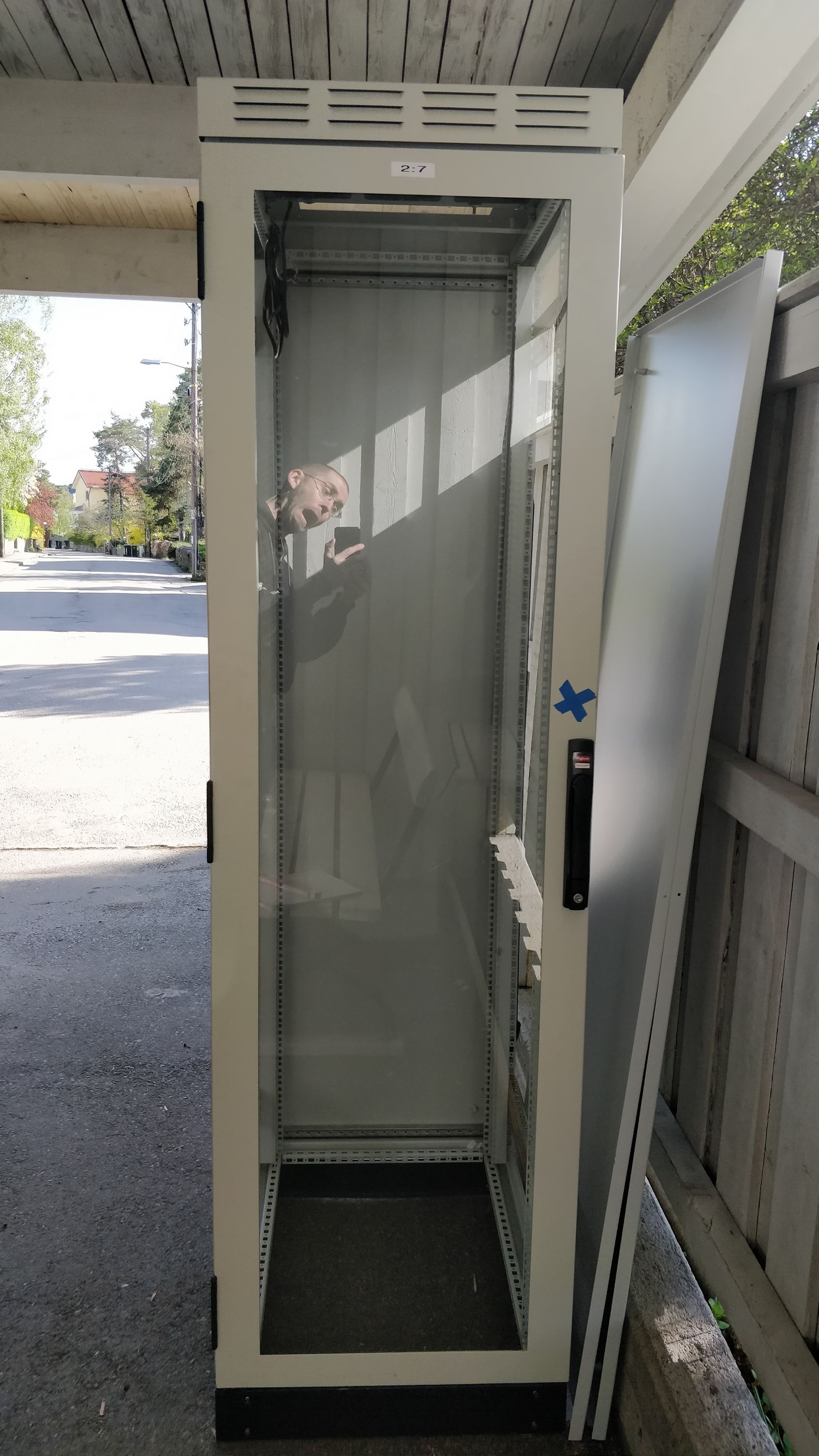
A couple of months later, the build of Anderstorpsfestivalen 4 starts and we load this massive slug onto a trailer in order to bring it to the festival site. Remember that this thing weighs over 130 kilos so it is less of a fun experience carrying this around. It’s also not often you see a 42U rack loaded up with 20 cases of beer on a trailer.

Since we basically have to rebuild the rack from inside out in order to fit our specifications, we start with tearing down all the innards and throwing away all the pieces that won’t be needed for this project. 42U racks are designed to hold load while standing up, not laying down. This means that a lot of retrofitting has to be done in order to make sure that the structural integrity is still solid when 8 drunk people are leaning on this beast.

The next step is to mask all of the glass out in order to paint the outer and inner enclosure black. We decided early on that the 90s grey that the rack came in was a bit too much for us to handle in terms of surrounding design so covering this up was the first priority.

While me, Alexander and Viktor was working on the hardware side of the rack, Johanna started paining the pieces that would fit inside of this rack and be illuminated by UV LEDs. Initially Johanna had sketched up these “la croix” style patterns that would invoke feelings of bad 90s design but still be visually pleasing

Once we got the plywood, Johanna ended up forgoing this design and focusing on filling in the natural wood instead. The plywood piece that we bought had these beautiful natural wood lines that could be traced with the neon colors to create a beautiful pattern.
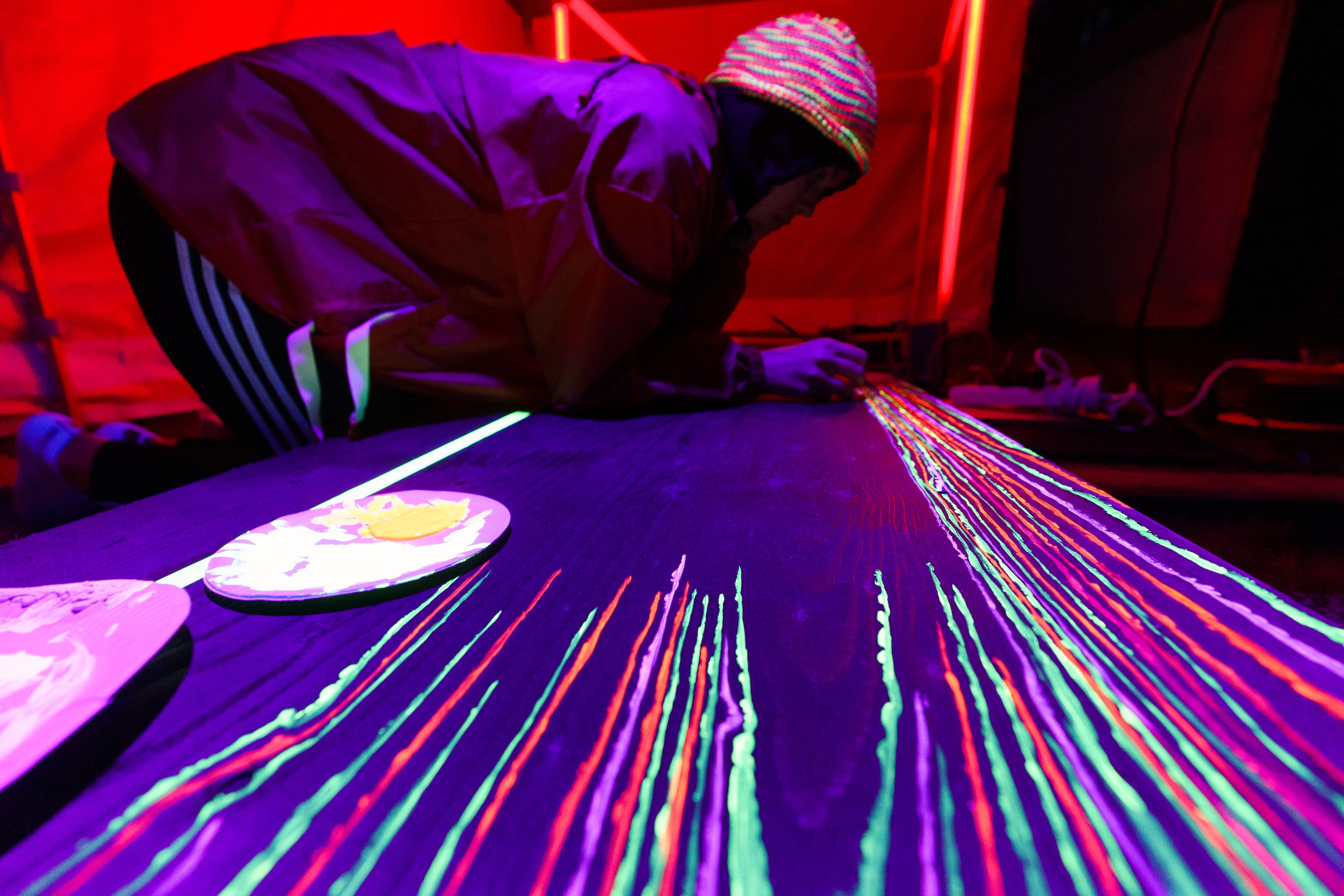
Since the drink inventory would be slanted, there would be room underneath to stash all technology to drive the Raspberry Pi’s and LEDs in order to power the dashboard, modems and landline phone project. The LEDs underneath the acrylic ice is a strip of APA102 powered by a Pixelblaze in order to facilitate easy animations. In the end we settled for slow moving color shifts between colors that worked with the neon colors.

Sadly we underestimated the amount of fake ice that would be needed to cover an area like this so we had to settle on centering the drink inventory. Due to this miscalculation of acrylic ice, there was room to add more UV paintings on the slanted area in order to fill out the visual negative that currently existed.

As I talked about last year, it’s really something to have these projects materialize in a physical form after thinking about them for so long. This particular project took a lot of slow burning thinking and group visualizing over voice chat which made it so complex to pull off. The end result, albeit not enough ice, was better than what I had imagined that we could pull off.



North of Umeå there is a small village by the name of “Kåsböle”.
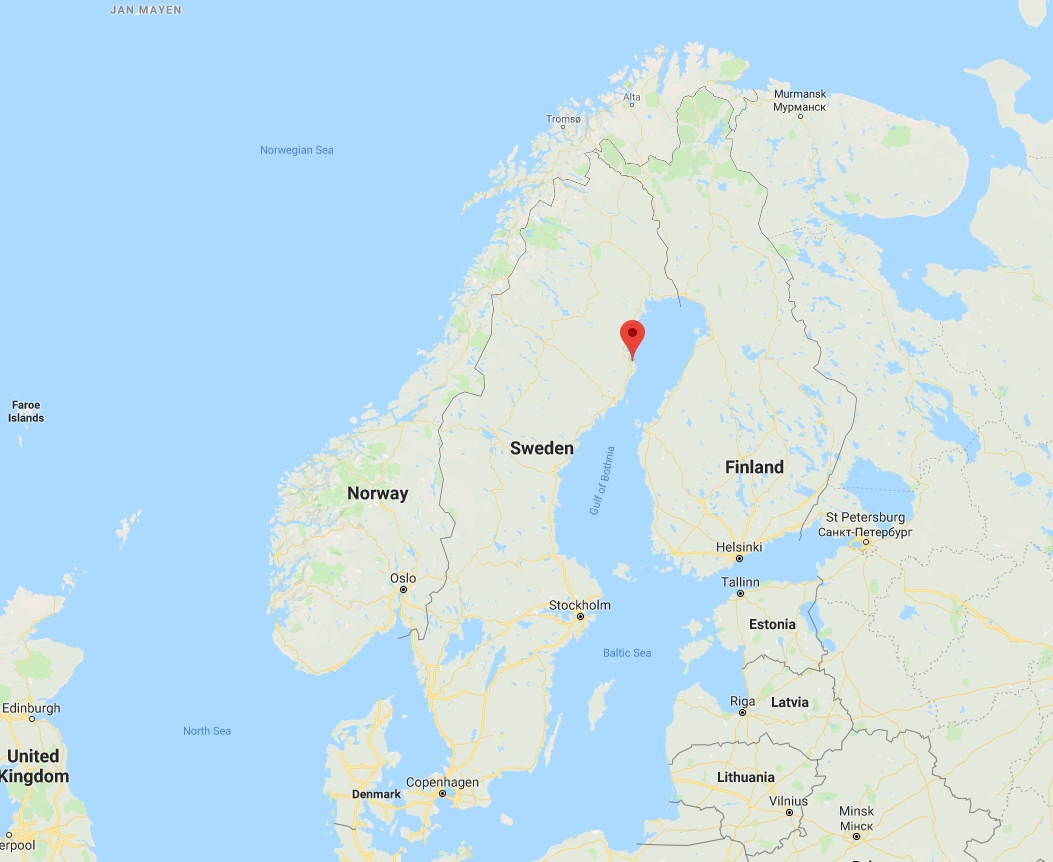
In order to get some peace and quiet after ANDERSTORPSFESTIVALEN I embarked on a long drive up there in order to meet an old friend. This is a friend that I wish that I could meet more often but due to distance and non-adjacent friend networks seldom do. The few days spent up there was a Swedish dream, everything was as of out of a tourist guide. Light all night, fantastic nature and a peace and calm that differs greatly from the stressed environment of San Francisco. Time feels less important when the surroundings move at a slower pace.





Been a while since I wrote an update about this project. Lot has happened in life which is why this post has been postponed a bit. Traveled a lot for work and managed to catch the flu on one of these trips which had me spending a lot of time at home, playing RDR2.
Last post talked a bit about drilling but at that time I still hadn’t figured out how to fit all the electronics within the cube. One of the design goals is to have no visible wires except for the power/signal feed coming in at one of the sides. This means that all the power distribution has to happen inside the cube. Since the space and the AWG cable requirement is so high it was impossible to just do this the simple way. Everything has to fit in that tiny 3 way connector which meant that most of the connectors had to be perfectly flush with the 3D printed ends.

The blue outlined part representes the acrylic tube, meaning the inner diameter is about 31,5mm. Within this diameter, the aluminium profile, passthrough data cable, power cable and LED strip has to fit with junctions and soldering + the MOLEX connector that connects with the other tubes. In order to get this right i tapped the knowledge of 2 good friends who happened to be in San Francisco, Love and Pajlada once again spent a day with me to bounce ideas on how to build this.

What we ended up deciding on was that the power rail cable would be crimped separately in the MOLEX connector, then there would be a soldered junction in parallel with the power rail that branched out to the LED strip from both directions in order to ensure that there would not be a voltage drop which causes less intensity. The signal passthrough would be fixated using hot glue to the aluminium angle.
Next up, the diffusion film that goes inside of the tubes had to be inserted. Since the diameter is 31,5mm and this film isn’t made to be rolled it was quite a challenge to insert this film without damaging it and creating crevasses in the film. What ended up working is using a round wooden stick on which the film was first rolled up onto, pushed into an acrylic tube and expanding onto it’s shape inside the acrylic tube. Since I once again went too far with my perfectionism I wanted the seem to be invisible, this however meant that the cut between the 2 rolls of film had to align perfectly, so cutting this had to be very exact. Luckily I had just the solution for this.

It turns out you can use one of these plastic mats from IKEA designed for office chairs to not damage the floor as a cutting board, couple this with some 3D printed measurement brackets and a laser cut acrylic template, it was easy to cut these up and fit them into the tubes. You can see the nice effect that becomes when the diffusion is inside of the tubes rather than outside, as the acrylic tube creates a certain glossy depth.
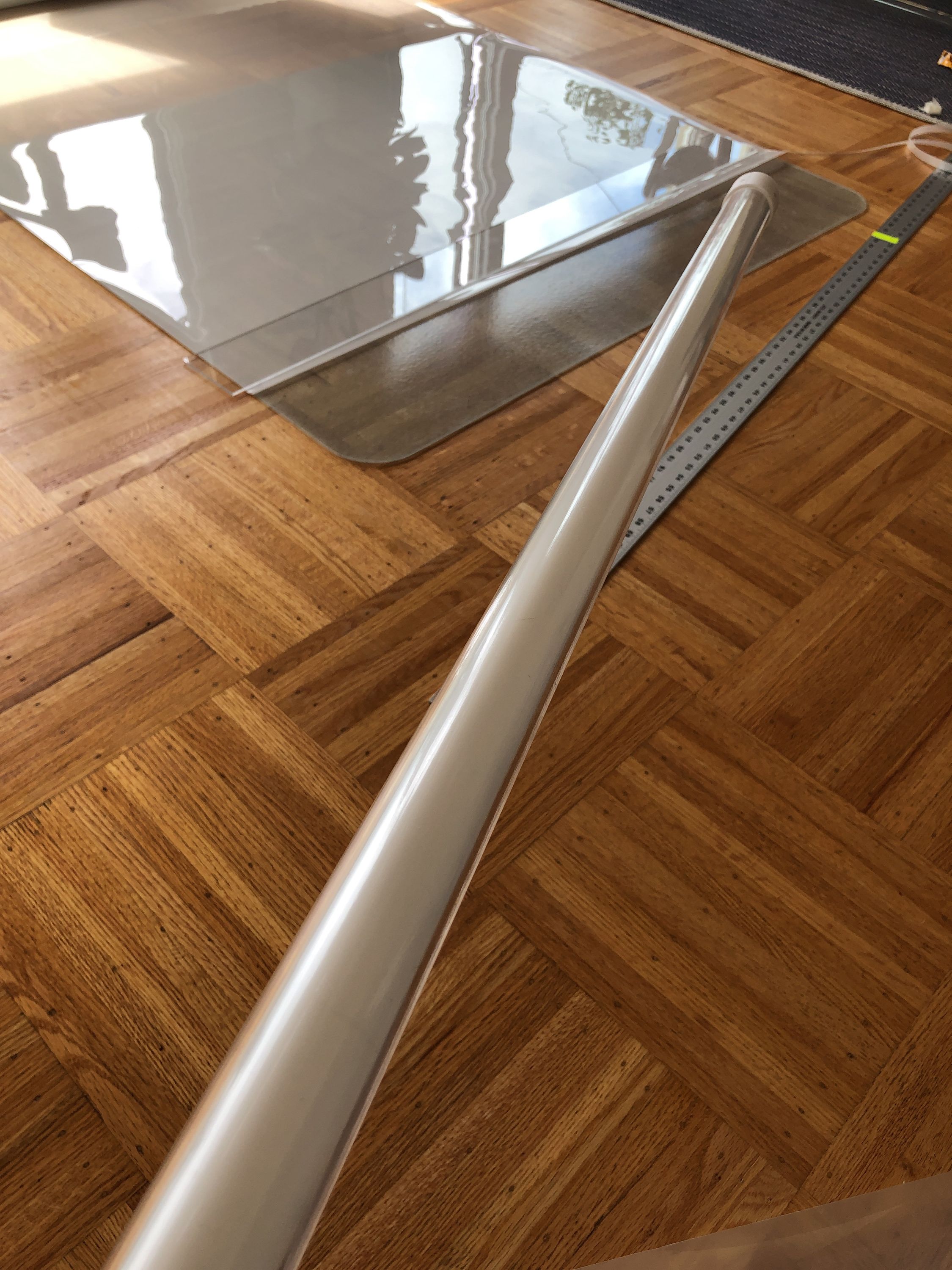

Lots of time was spent soldering these together and fixating the LED strip onto the structural bracket. The neat thing about the bracket is that it reflects a lot of the light so the result is a very even light distribution. This picture also shows the passthrough and the exiting power cables from the rail in more clearly, this allowed the result to be very flush.

Finishing these up felt like a real milestone in this project. The only hardware part remaining now is the connector cables for the ends, which can be made very fast. From now on I need to focus more on getting the software up and running as that has been a bit on backburner due to me focusing on some other projects related to ANDERSTORPSFESTIVALEN.
My hope is to write 2 more updates about this cube in rapid succession, one about how the code has developed and one about the actual launch of this in July, see you then!
The good part about Psytrance gatherings is that they are usually located in remote areas. Unlike a big festival that focuses on ease of reach, simple transport options and surrounding services, the psytrance gatherings are often the opposite. Such was the case with Ozora USA, a small “sample” of the European experience (which was a instant go for me). The location was hidden away all the way up in the desert mountains with this beautiful view, about an hour drive from the nearest town.



Smaller festival tends to create smaller and more intimate communities, which is why they are more enjoyable. With music running 24/7 from the stage the concept of “getting drunk for the night” doesn’t exist. You can go and sleep for a couple of hours and get right back to the stage which makes it more a marathon and less of a sprint. This creates another kind of mood of the audience, being in it for the long haul together.



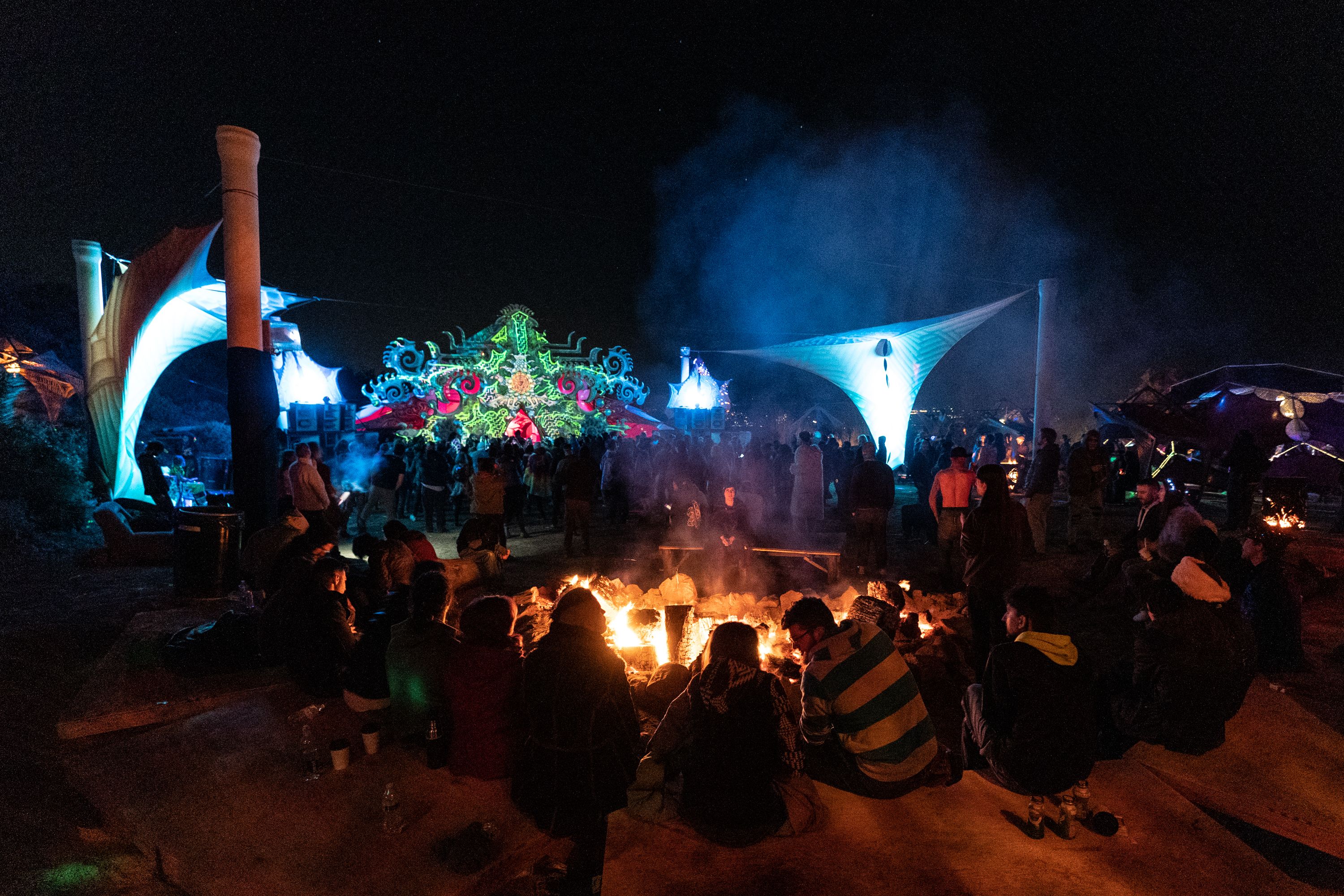
If you’ve never tried it, there is something special about standing with strangers and watching the sunrise come up over the horizon while hearing the echoes of the stage behind you.

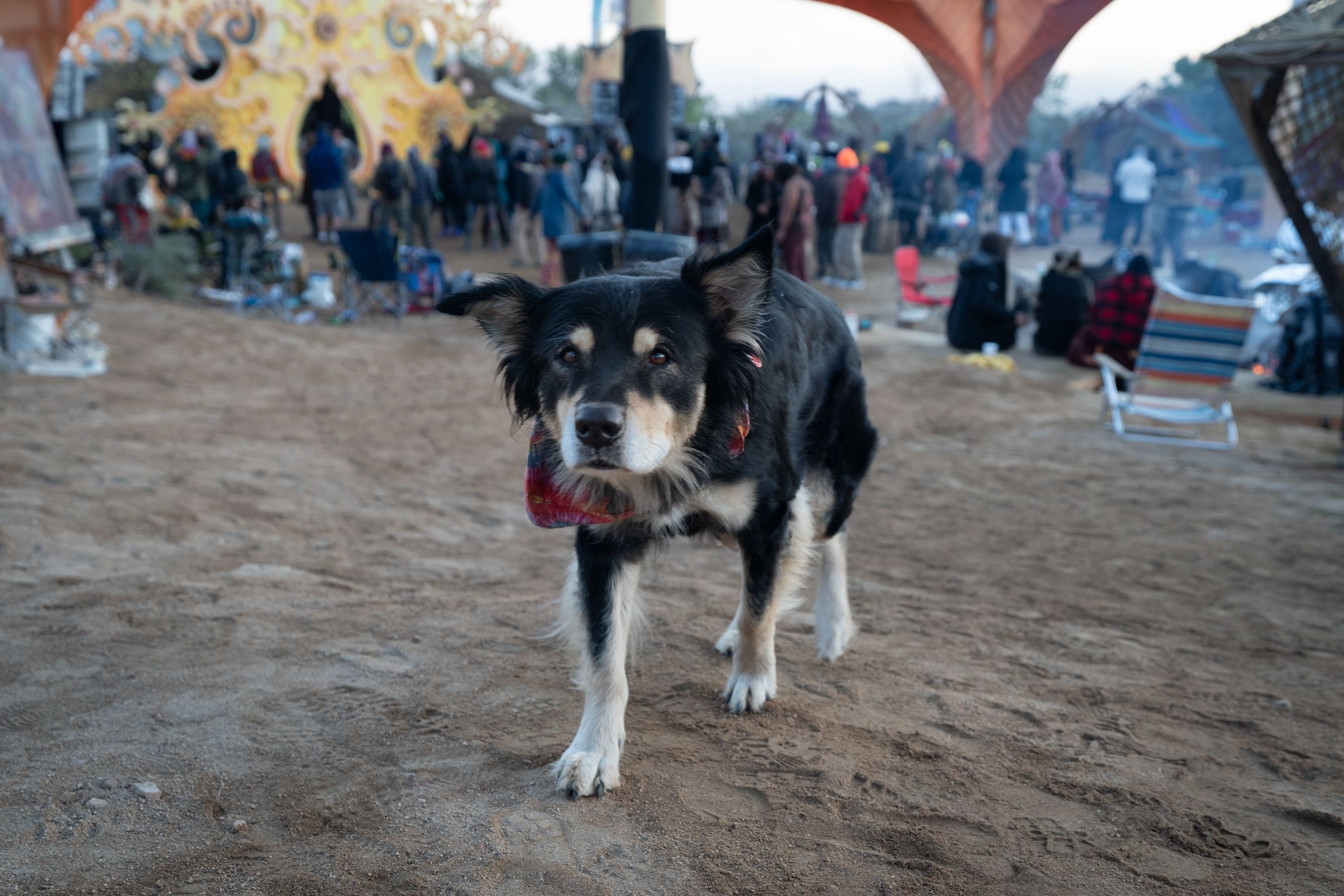
The trip was worth every minute, driving through these landscapes was almost as much of a highlight as the event itself. With that said, 4 days of Psytrance is sort of the limit of what i can handle so it feels good to be home.